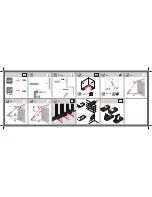Reviews:
No comments
Related manuals for 2075

EMU
Brand: rainforest Pages: 2

LD080P
Brand: Makita Pages: 2

LD060P
Brand: Makita Pages: 16

Charge Analyzer 711
Brand: 3M Pages: 24

A-61
Brand: Artesia Pages: 36

Precision 2.0
Brand: Pasco Scientific Pages: 11

HI 701
Brand: Hanna Instruments Pages: 2

5TM
Brand: Tohnichi Pages: 12

Concert Performer Series Digital Piano CP110
Brand: Kawai Pages: 149

Aquaread
Brand: Van Walt Pages: 2

7300A
Brand: Teledyne Pages: 85

Cube L1
Brand: Primes Pages: 56

Vigilant Plant MR20000
Brand: YOKOGAWA Pages: 230

HI 95771C
Brand: Hanna Instruments Pages: 12

MCR-4V
Brand: T&D Pages: 31

Sonic-Pro S6A Series
Brand: Blue-White industries Pages: 2

NUMERIxx3
Brand: FMT Swiss AG Pages: 24

GM8903
Brand: Benetech Pages: 16

















